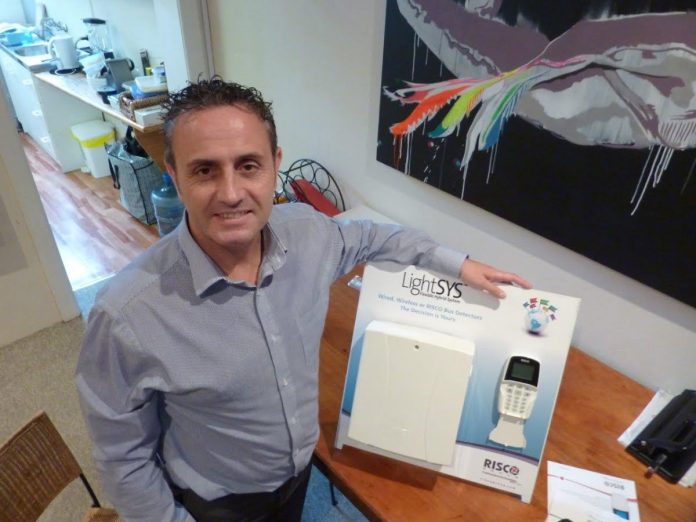New alarm and home automation player Ajax Systems, which is distributed locally by NAS Australia and others, is ruffling feathers with its comprehensive range and growing market reach – John Adams spoke with Tim Prag to find out more…
JA: What is the Ajax Systems sales strategy in Australia – there have been suggestions the product is DIY-style. Is this the case or have some people got the wrong end of the stick?
TP: Firstly, the Ajax strategy in Australia is that the products are only sold through the professional security distribution market, and although difficult to police, are forbidden to be sold via any unprotected e-commerce site where pricing to end users is visible. It will never be sold as DIY. That said, I know some licensed installers do pre-programme and ship systems to end users, but Ajax and its distribution partners should do their upmost to stop this from happening.
JA: How will you police and punish transgressors?
TP: This strategy is within our Ajax Systems agreement and has been communicated with our partners. Anyone who breaches this agreement risks being cut off from the product. Our position is that Ajax products should only be sold to licensed security installers, we are a firm believer in protecting the professional market.
JA: There’s been talk that Ajax Systems is offering free self-monitoring via the cloud – is this the case and isn’t it fair to say a number of suppliers have similar services, or offer system combinations that can be setup in the same way?
TP: Free, self-monitoring with professionally installed intrusion systems has been available in Australia since I arrived back in 2012 – in fact even prior to the smart phone, sending SMS or ringing siren tones through PSTN lines was being utilised as a self-monitored solution.
I guess the grumble here is that Ajax does not charge for self-monitored services, but they are not the only one. There many other manufacturers already in the Australian market offering what can be set up as a self-monitored solution, some free and some with a cost, but still a self-monitored service. This is at the installer’s discretion and more importantly driven from a customer demand.
JA: Are all Ajax solutions self-monitored or are Aussie monitoring stations now supporting the brand with professional monitoring services?
TP: Just like many other current professional brands, it is up to the installer whether they offer professional monitoring services with a system or whether they set up a self-monitored service at the customer’s request. Ajax has free software called AJAX Translator, which is available on vetting and approval, only to graded professional monitoring companies, and to receive verification images is subject to the alarm handling software having the XML integration.
There are four Australian monitoring stations already tested and confirmed and several more on the go. The panel sends out SIA DC 09, so any MS with a SIA receiver can receive alarm events directly from the Ajax hubs, the cloud services are only required for receipt of the visual verification images or as a backup. More Ajax integration monitoring info can be found here.
JA: Is it possible for installers to limit the degree of self-monitoring users can do – to give them enough to have situational awareness, while retaining professional monitoring to a high standard, as you would want in a SMB applications, for instance.
TP: The Ajax professional app allows the installer to restrict the end user from viewing any unnecessary content in the end user app, or they can give them full access, this is managed by the installer on the initial setup.
Subject to app restrictions given by the installer, the end user, should they decide at a later date that the site requires professional monitoring, they can request a call back from a professional monitoring service who supports the AJAX integration. If this service is restricted by the installing company, the end user must call the installer, who can connect such services via the AJAX Pro app or Desktop.
JA: How capable is Ajax of supporting professional monitoring services, given it’s sporting the latest app, sensing and communications technologies?
TP: If anything, the AJAX product enhances the opportunity to enable back-to-base monitoring. Alarm events, visual verification and app panic button geographic location services for tracking, have both been tested into Bold Manitou and with Patriot Systems, and with more integrations ongoing, more back to base monitoring options will become available.
JA: How good is Ajax wireless technology – and what technology is being used between sensors and hubs?
TP: AJAX systems has put a dint in the global sales of many other wireless manufacturers, I believe Ajax will be one of very few Australian wireless intrusion products working on the 915MHz frequency, with all other intrusion manufacturers still working on the old and now noisy 433 MHz band. AJAX uses its jeweller wireless technology to communicate events between Hubs and field devices and its Wings technology for transmitting the image verification.
JA: Should alarm manufacturers, bureau installers and monitoring providers be worried about Ajax from the point of view of taking customers away from professional monitoring to a DIY free cloud model?
TP: I think from a competitive manufacturer’s perspective, the worry of Ajax is not self-monitored versus professionally monitored, but being out-performed by true wireless range, product design, product specification and system integrations, along with competitive pricing.
After over 30 years working in intrusion and almost two years working with AJAX, I believe someone has finally taken wireless intrusion products to that next level, where what it says on the tin is what you get in the field. In my opinion, it is this performance enhancement that will be revolutionary for the Australian professional licensed installer, and it’s long overdue.
#sen #sennews #sen.news











